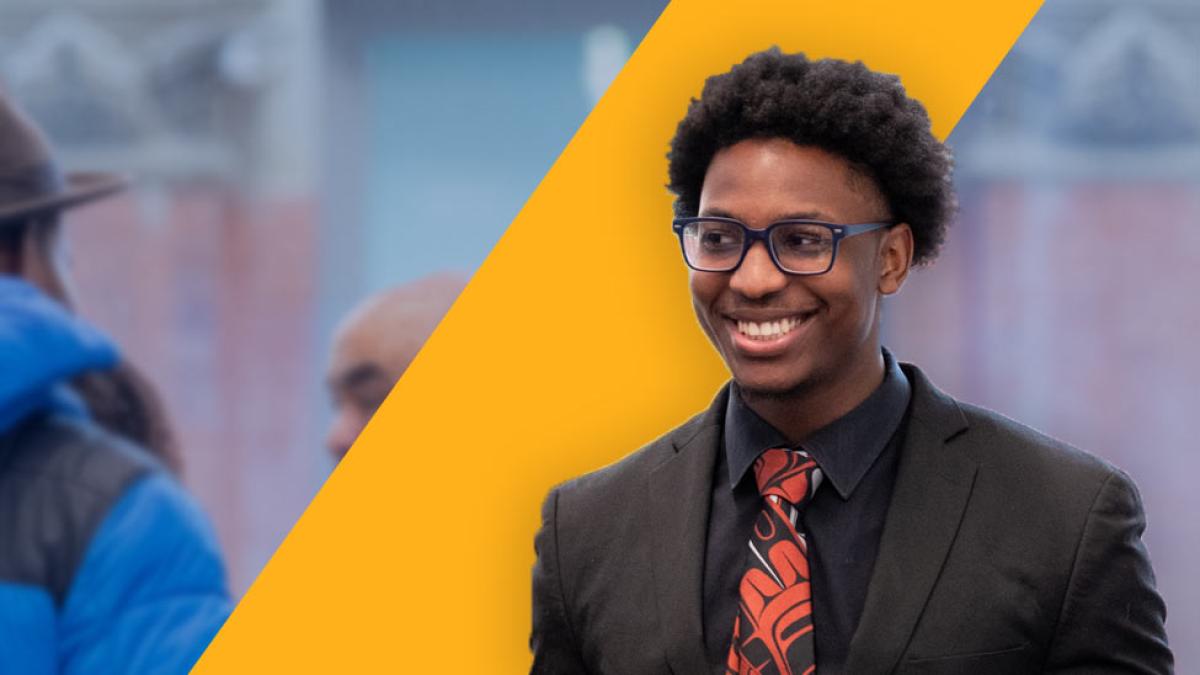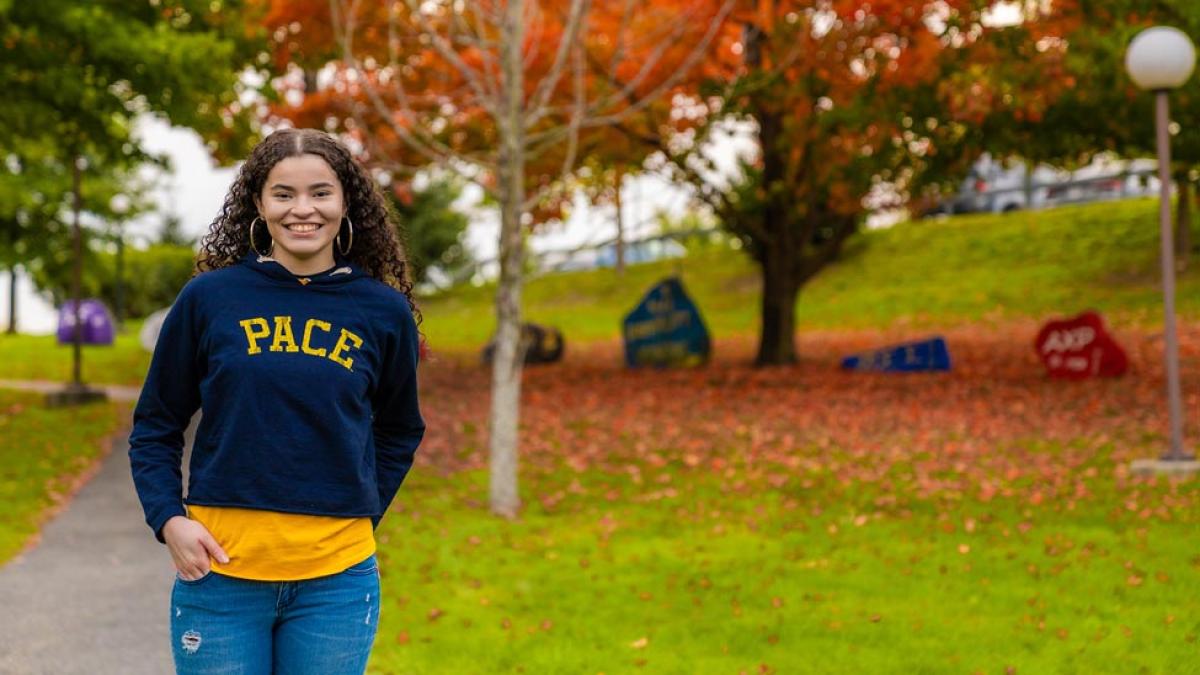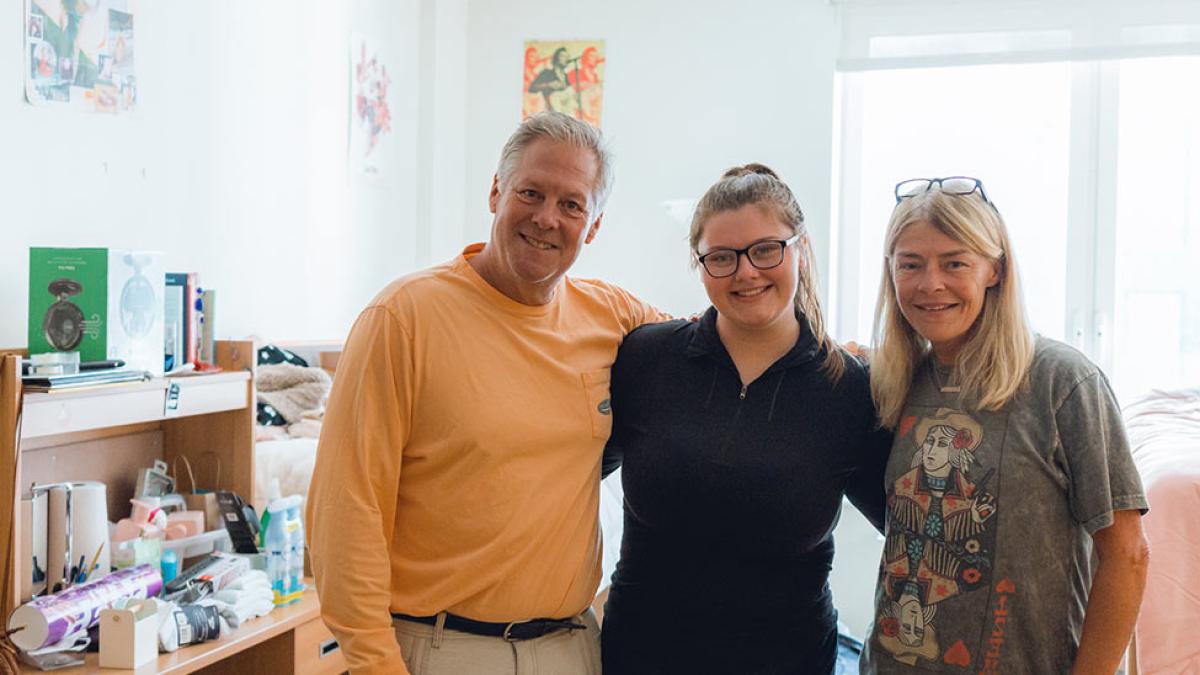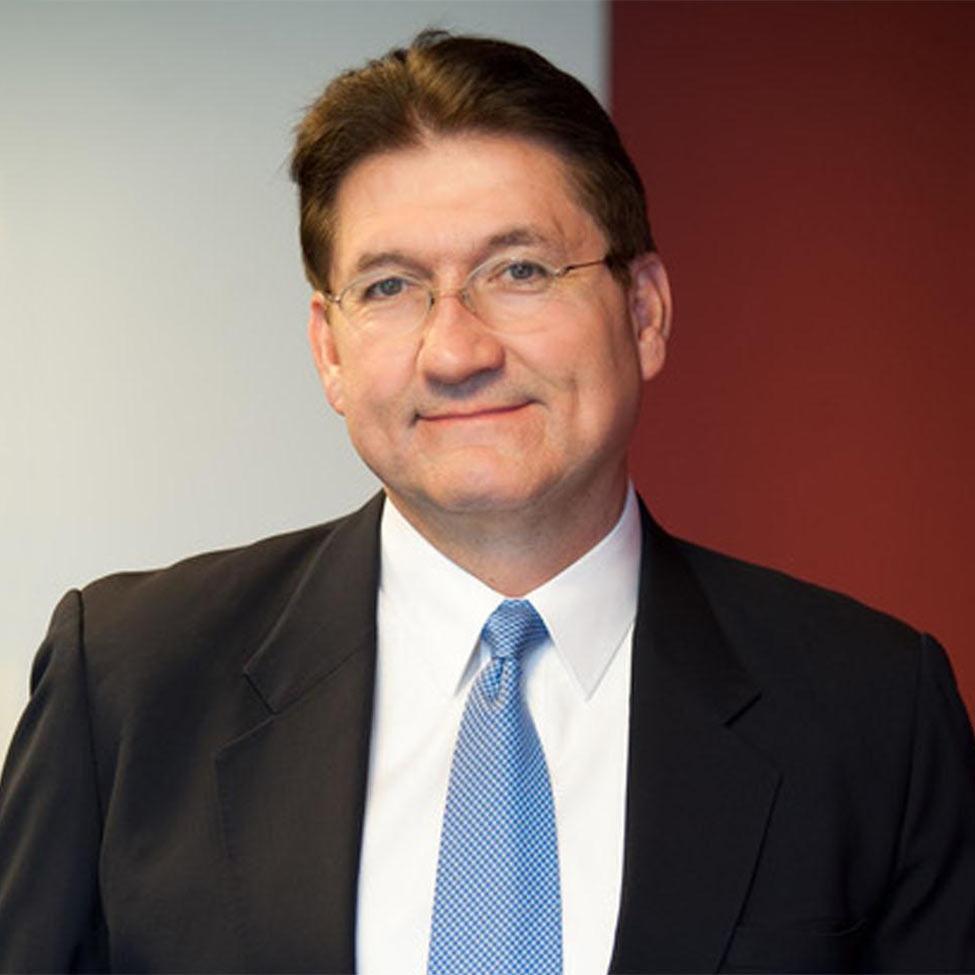
Seidenberg Interim Dean Li-Chiou Chen Recognized Among New York’s Asian Trailblazers
- Read more about Seidenberg Interim Dean Li-Chiou Chen Recognized Among New York’s Asian Trailblazers
Pace University's Seidenberg School of Computer Science and Information Systems Interim Dean, Dr. Li-Chiou Chen, has been highlighted and included in the official City & State New York’s inaugural Asian Trailblazers list.
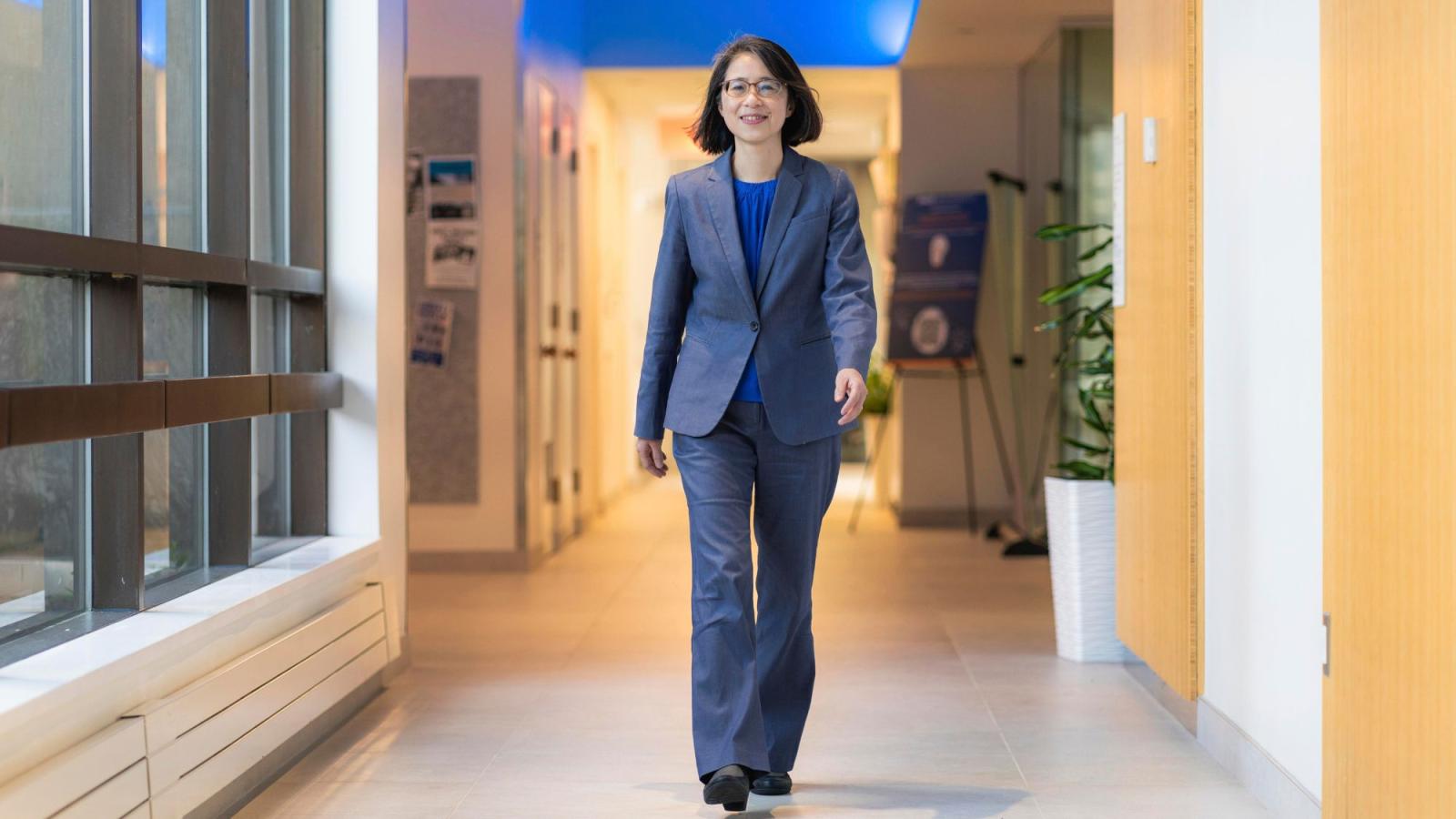
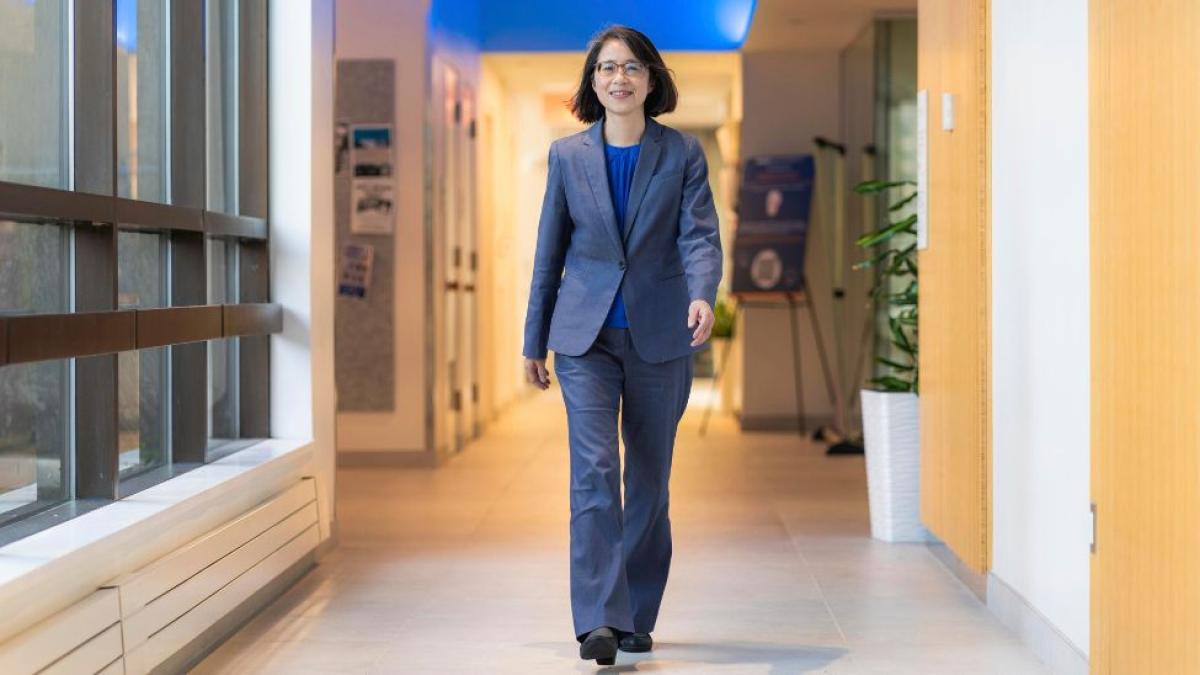
Pace University's Seidenberg School of Computer Science and Information Systems Interim Dean, Dr. Li-Chiou Chen, has been highlighted and included in the official City & State New York’s inaugural Asian Trailblazers list.
The Asian Trailblazers list puts a spotlight on Asian innovators and groundbreakers shaping politics and policy across the state, including government officials, business executives, nonprofit and labor leaders, academics, activists and other individuals. This list replaces the ranked Power of Diversity: Asian 100 list.
As City & State described: “With a leadership style that extends beyond the classroom, Li-Chiou Chen is the tech visionary leading Pace University’s Seidenberg School of Computer Science and Information Systems. Chen, who earned her doctorate of engineering and public policy at Carnegie Mellon University, is now championing diversity in STEM and is overseeing Pace’s innovation in cybersecurity, artificial intelligence and game development. Chen, who has won federal grants for research on user authentication, application security and security risk perception and management, has also helped boost Pace as a National Center of Academic Excellence in Cyber Defense Education.”
In addition to those achievements, Dr. Chen is the principal investigator of the National Science Foundation–funded CyberCorps® Scholarship for Service program and the National Security Agency–supported GenCyber programs. Through her leadership, she has secured vital research grants and spearheaded initiatives that train the next generation of cybersecurity professionals, helping to position Pace as a leader in the field.
Congratulations Dean Chen on this well-earned recognition—and thank you for your vision, leadership, and lasting impact on Pace and beyond.
Dean Lawrence G. Singleton Concluding Term
Dean Lawrence Singleton to conclude his transformative term at Pace's Lubin School of Business, marked by innovation and growth.
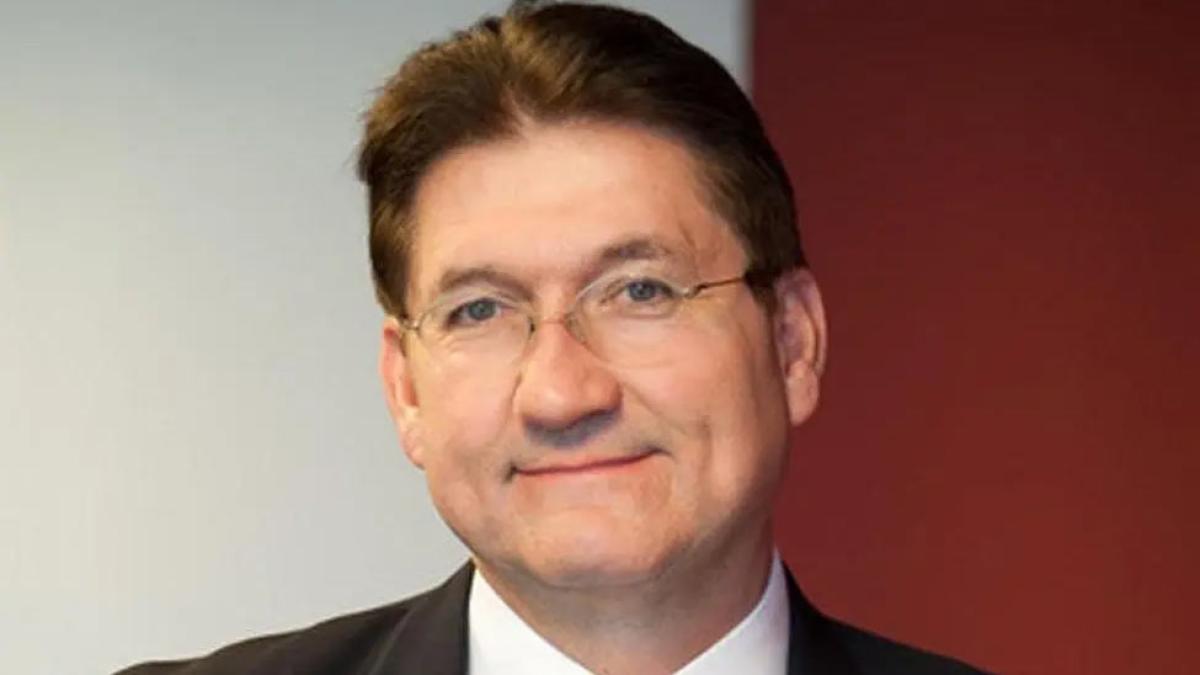
Lawrence G. Singleton Concluding Term as Dean of the Lubin School of Business

Lawrence Singleton will conclude his term as Dean of the Lubin School of Business on August 31, 2025. Having served as Dean since August 2020, his tenure has been marked by a period of innovation and significant fundraising, including the establishment of a new endowed professorship, support for accounting co-op students, and student scholarships.
“Larry is a forward-looking leader with a sharp focus on how business and business education are evolving. His dedication to providing students an unmatched academic experience has led to new ideas and important changes to business education at Pace University,” said Lynda Hullstrung ‘89, Chair of the Lubin Advisory Board. “Larry has excelled at setting Lubin in a good place for future growth.”
Having started during the height of the COVID-19 global crisis, Singleton’s first two years at Lubin were marked by social distancing, masks, and meetings on Zoom. Singleton successfully led Lubin through this uniquely challenging time by working with faculty leaders to benchmark all of Lubin’s undergraduate and graduate programs and making needed changes to prepare Lubin for the future.
Singleton dramatically increased the school’s visibility through enhanced promotional efforts. He launched Lubin Business magazine to promote the school and restarted the Lubin Business Review (mothballed since Covid) to popularize faculty academic research. He also dramatically increased Lubin’s use of social media and online videos. He used these vehicles to promote everything, from faculty research to engaging current students and recruiting new ones.
During Singleton’s tenure Lubin raised more funds than during any previous Pace University deanship, including a gift to establish the Mario Gabelli Endowed Anthony R. Pustorino Professorship in Accounting, a multi-million-dollar endowment for accounting student support, and a major planned gift from a Lubin alumnus. He also raised significant funds to support student scholarships, both endowed and current use.
He put in place a process that required new program proposals to include well-reasoned proforma financial plans and external validation, and sunsetted many programs that were underperforming. Under his leadership Lubin developed new STEM programs, with a particular focus on graduate programs. These programs are particularly attractive to international students due to the opportunity for three years of Optional Practical Training in the United States, and Lubin is experiencing a great deal of success.
Lubin’s new MS in Accounting Data Analytics and Technologies program experienced over a seven-fold increase in applications. He also led the effort to develop other STEM programs with analytics themes. These programs provide significant new revenue streams while building the university’s reputation abroad.
Lubin developed a new interdisciplinary BBA in Business Technology (BizTech) and MS in Financial Operations and Technology (FinTech) programs in partnership with the Seidenberg School of Computer Science and Information Systems. These interdisciplinary programs strengthened faculty collaborations across schools while simultaneously addressing market demands.
He also raised significant funds to support student scholarships.
Singleton developed relationships with the New York area business community that provided opportunities for students across the university. He brought the Renewable Energy Conference – A Leadership Forum on Energy Policy, recognized as the premier renewable energy conference on the East Coast, with him to Pace. Partners include The Business Council of New York State (the leading business organization in New York State, representing the interests of large and small firms throughout the state) and The Hudson Renewable Energy Institute.
He partnered with The Business Council of New York State and the Business Council of Westchester to develop the Pace Business Poll that assesses the business climate in downstate New York, including the New York City metro area. This builds Pace’s brand while providing students additional opportunities to interact with businesses in the area. Singleton expanded Lubin’s Small Business Development Center into Brooklyn, extending Pace’s reach beyond Manhattan and further building its reputation in New York City.
Singleton successfully leveraged Pace’s New York location for the benefit of students in many ways. Lubin hosted Bill Ackman, CEO of Pershing Square Capital, for a finance focused event, and Tim Ryan, then PwC US Chair and Senior Partner, for a fireside chat focusing on initiatives in his firm. He also recruited new members to the Lubin Advisory Board who are leaders in their fields.
He regularly hosts Dean’s Roundtable and Executive in Residence programs to successfully engage successful alumni and other New York area leaders and provide additional opportunities for engagement and philanthropy.
Larry is a forward-looking leader with a sharp focus on how business and business education are evolving. His dedication to providing students an unmatched academic experience has led to new ideas and important changes to business education at Pace University
—Lynda Hullstrung ‘89, Chair of the Lubin Advisory Board.
Under Singleton’s leadership Lubin provided significant experiential learning via Lubin’s Center for Student Enterprise, which provides experiential learning opportunities for students on Pace’s Pleasantville campus. The newest student run business, the Pace Business Poll, provides students an opportunity to solicit opinions about important issues facing businesses in downstate New York.
He worked with Sixth Street Partners to develop the Wall Street Acceleration Program that engages investment banking professionals and provides additional banking opportunities for finance students and oversees a Winter Internship Co-Op Program that allows accounting students to work full-time at Big Four and other firms without falling behind in their studies. Students earn while experiencing what public accounting is like during the traditional busy season.
Singleton joined the Lubin School of Business from Marist College (Now Marist University), where he was Dean of the School of Management and Professor of Accounting and International Business. He previously served as Associate Dean for Undergraduate Programs and accounting faculty member in the School of Business at The George Washington University. He has also held faculty positions at Peking University in China and Grenoble School of Business in France. He is a Certified Public Accountant (Virginia) and Certified Global Management Accountant and has significant industry experience. He worked in the Washington office of Ernst & Young (EY) and has consulted with many leading organizations in many industries, including Nasdaq, Harley Davidson Motor Company, Siemens and Roche.
Singleton has served on numerous nonprofit boards, including Beta Gamma Sigma (Audit Committee Chair), the Mid-Atlantic Association of Colleges of Business Administration (President), the Mid-Atlantic Region of the American Accounting Association (President), the Human Resource Certification Institute (Finance Committee Chair) and The Hudson Renewable Energy Institute.
At the conclusion of his term, Singleton will take a sabbatical to focus on entrepreneurial ventures.
“Phenomenal:” Pace and Parsons Students Team Up for Game Jam
Earlier in the Spring 2025 semester, students from Pace University’s Seidenberg School of Computer Science and Information Systems joined forces with peers from Parsons School of Design for an unforgettable game jam experience themed around scientific phenomena.
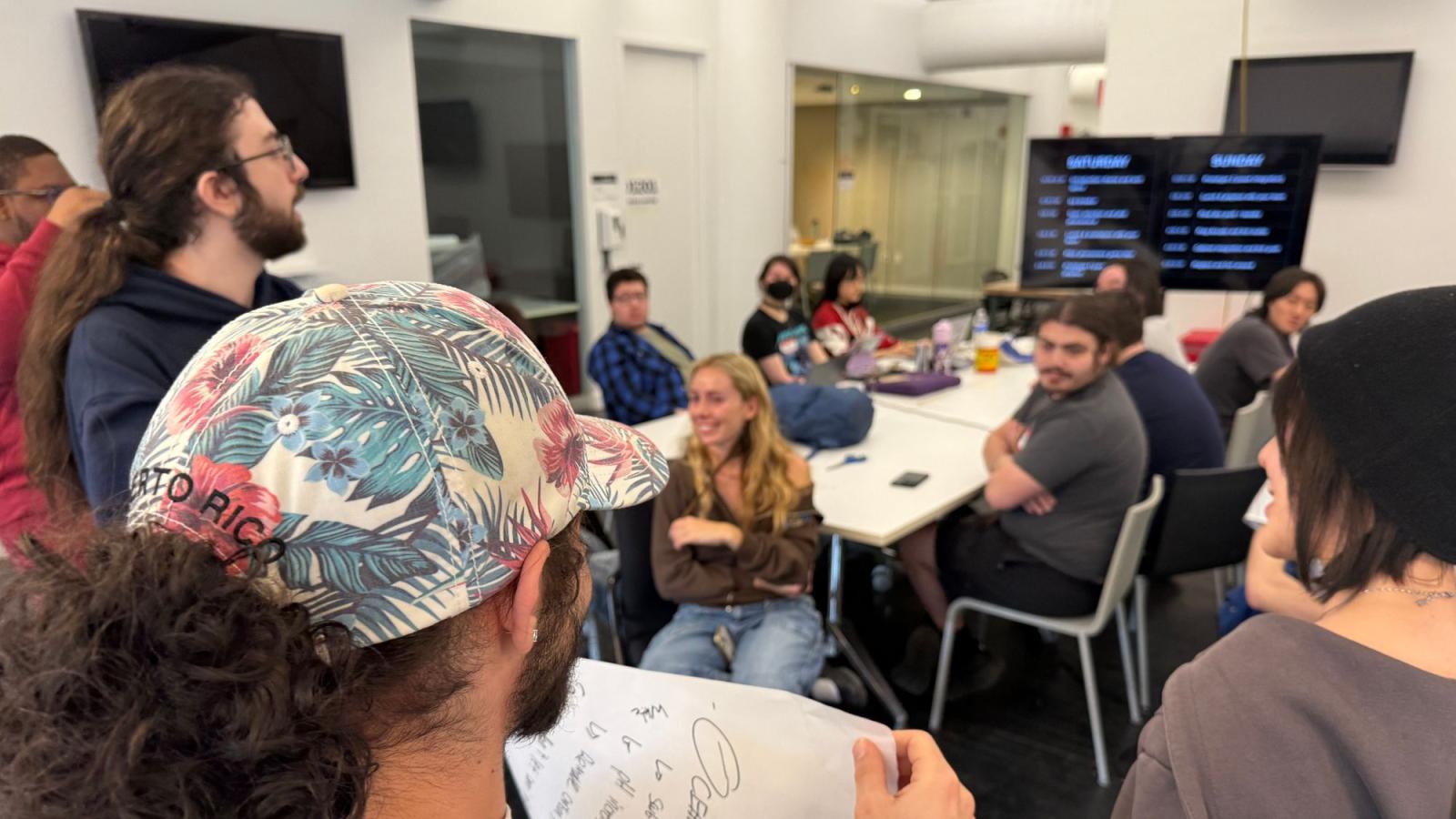
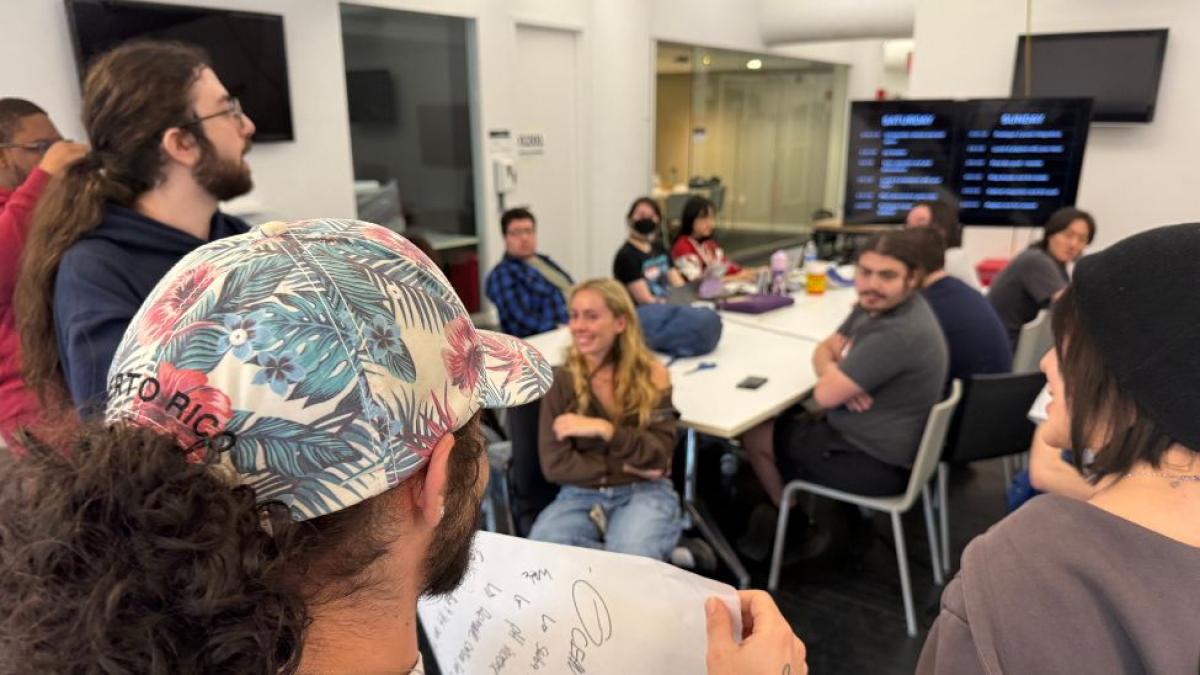
Earlier in the Spring 2025 semester, students from Pace University’s Seidenberg School of Computer Science and Information Systems joined forces with peers from Parsons School of Design for an unforgettable game jam experience themed around scientific phenomena. The two-day event, named “Phenomenal,” was run by Seidenberg’s Game Development program Director Carmine Guida and Brad MacDonald from Parsons. They challenged 24 student developers and designers to create arcade-style games that explored the wonders of science—while also fostering meaningful cross-campus collaboration.
The game jam kicked off on Saturday at Parsons, where students from both schools met for the first time. Icebreakers and introductions laid the groundwork for interdisciplinary collaboration. Students formed small teams of three to four participants, blending talents from both institutions.
“While many of the students at both schools can do code and art, our students mostly focused on coding while the Parsons students focused on design,” said Carmine Guida.
Students made their own art and even music for these projects.
On Sunday, the event moved to Pace University’s New York City Campus. As teams dove into development, using the “Phenomenal” theme as inspiration to bring scientific ideas to life through gameplay, the students worked to transform their ideas into creative yet functional, playable games.
“The students really got into the developing of their games and we started to see prototypes emerge,” Guida noted. “By the end of the day, the students had completed games which can be seen on itch.io.” And you can give these games a try yourself at the link below!
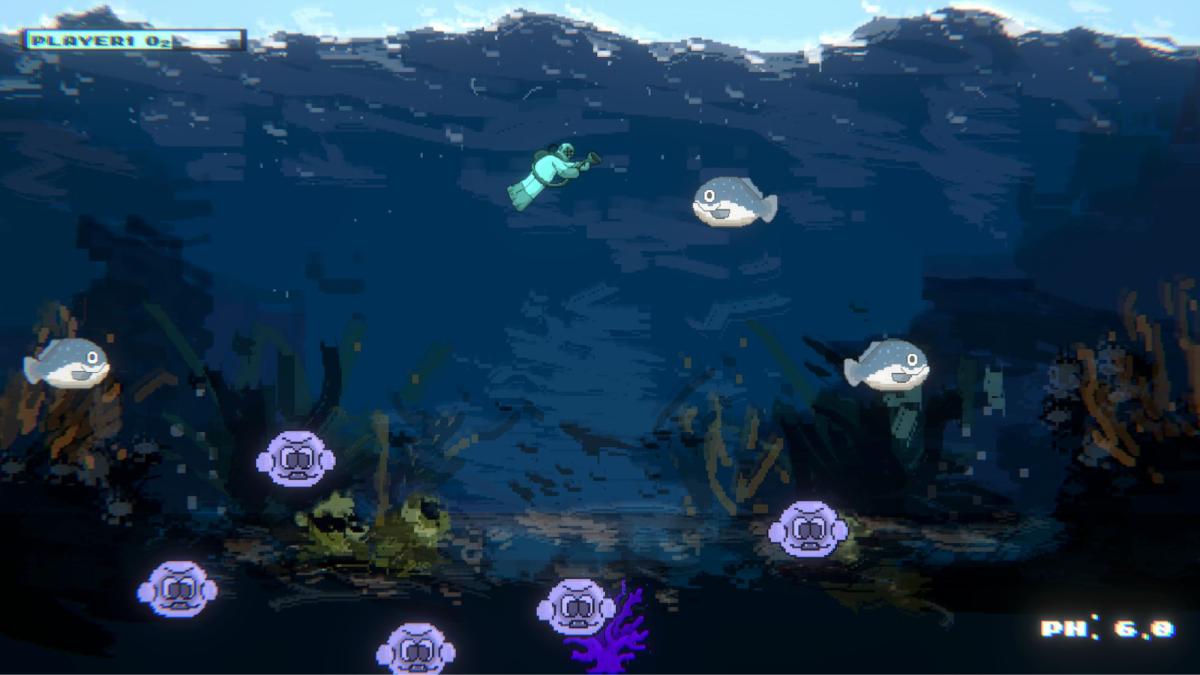
In line with the jam’s arcade-style directive, all projects were designed to be playable on a custom arcade machine located in the Design Factory space on the ninth floor of 15 Beekman. Some of the completed games are already featured on the machine—and can be played by anyone who wants to try them out!
What made “Phenomenal” particularly special was not just the quality of the work produced, but the spirit of collaboration it cultivated. According to Dr. Guida, the event surpassed all expectations. “This event was even better than expected!” he said.
Everyone worked so well together. They were great at dividing up the work and everyone was constantly working and doing things.
Perhaps even more exciting is what’s coming next. “These kids are staying in touch with each other and want to do more collaborations,” Guida added.
Events like “Phenomenal” show how powerful experiential learning can be when paired with curiosity, creativity, and community. By stepping out of their comfort zones and collaborating across disciplines, students didn’t just build games—they built lasting connections and new ways of thinking. And for many of them, this jam was just the beginning.
Where Innovation Meets Real-World Impact
Angeleena Kuriakose ’25 is building real-world skills through The Front Yard, turning classroom lessons into hands-on experience in innovation, events, and entrepreneurship.
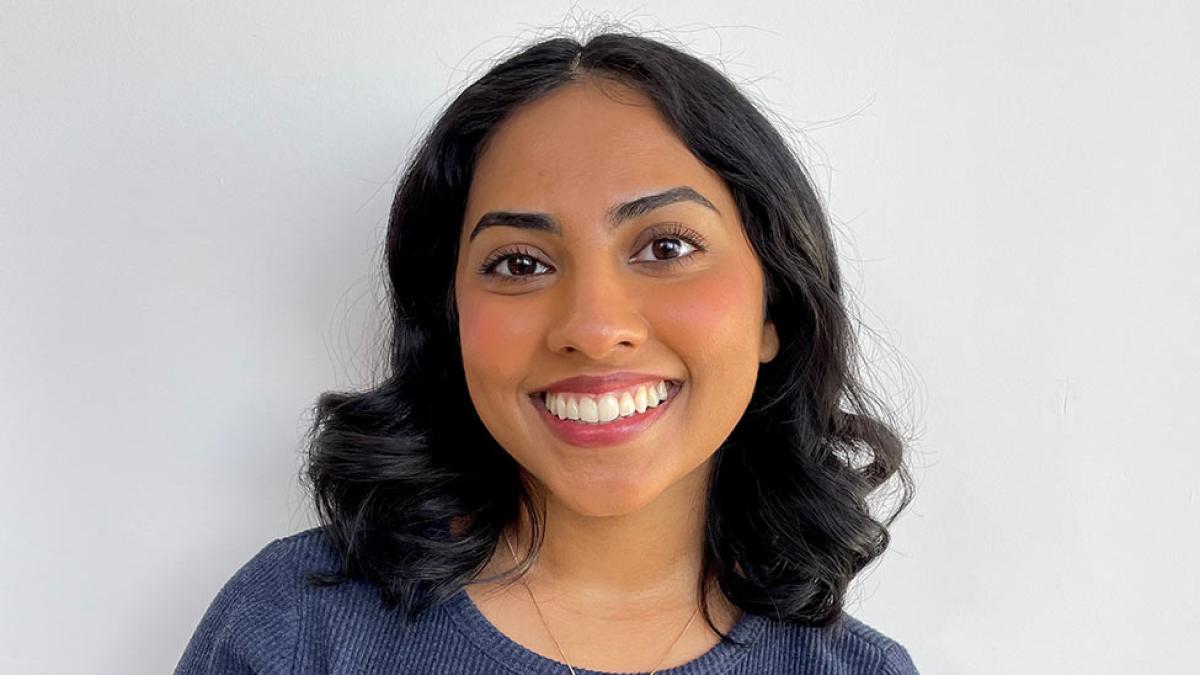
Angeleena Kuriakose
Class of 2025
Pronouns: she/her/hers
Currently Studying: BBA in Business Administration, MBA in Marketing Analytics
Member (Clubs): Student Assistant at The Front Yard (TFY)
Why did you choose Pace University and the Lubin School of Business?
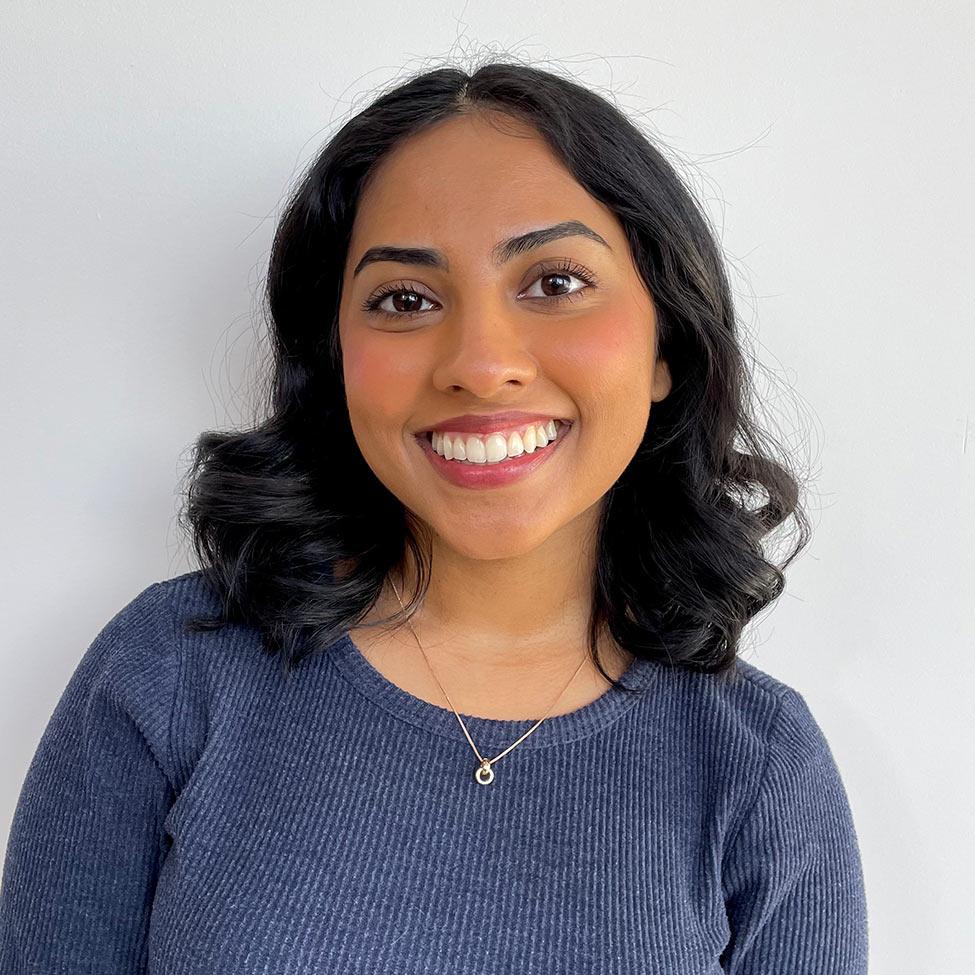
Pace University and the Lubin School of Business offered me the opportunity to interact with real-world business professionals. The strong network and opportunities I saw through alumni and industry connections made Pace the ideal place to pursue my business education. Lubin’s emphasis on entrepreneurship and innovation made me want to be part of an environment where I could gain hands-on experience, make meaningful connections, and have access to opportunities that would set me up for success in the business world.
Lubin’s emphasis on entrepreneurship and innovation made me want to be part of an environment where I could gain hands-on experience, make meaningful connections, and have access to opportunities that would set me up for success in the business world.
Tell us about your work with TFY. What do you do, how did you come across the position, and what has been the biggest highlight of working with TFY?
At The Front Yard, I am the Assistant to the Director. I help drive the program’s mission of fostering entrepreneurship and innovation at Pace. My role includes managing social media, coordinating events, and providing support to students, faculty, administration, and founders. I play a key role in organizing and managing logistics for events, startup programs, and initiatives, ensuring a seamless experience for all participants. I came across this position through my previous professor, Tamir Harosh, the program’s director. He saw potential in me during the semester and we stayed connected after the course ended. When the opportunity arose at TFY, Tamir offered me the position, and I have been fortunate to work closely with him ever since and have him as a truly inspiring mentor. The biggest highlight has been the incredible community of founders, innovators, and entrepreneurs. Everyone has an “anything is possible” mindset, and the culture of support and collaboration makes TFY an inspiring environment.
How do you think your time with The Front Yard will help prepare you for post-graduate roles?
My time with TFY has given me hands-on experience in event coordination, social media management, and strategic planning, all of which are valuable skills for post-graduate roles. Working closely with founders and administration has strengthened my ability to manage projects, problem-solve, and communicate effectively in professional settings. Additionally, being part of an entrepreneurial community has taught me how to think creatively, adapt quickly, and build meaningful connections. These are all skills that will be essential in any career path I pursue.
What are your future career aspirations? How has your time at Pace and at Lubin specifically prepared you to achieve your goals?
My future career aspirations are to become a project manager at a leading creative company in the entertainment, media, or tech industries, as well as explore and pursue my own entrepreneurial endeavors. My time at Lubin has prepared me by equipping me with essential skills in project management, leadership, and strategic thinking. Through my work with The Front Yard, I’ve gained hands-on knowledge in coordinating events, managing cross-functional teams, and fostering innovation. Lubin's focus on experiential learning and entrepreneurship has also provided me with a strong foundation to navigate the dynamic challenges of the creative industry, or to build my own business.
What has been your favorite opportunity at Pace?
My favorite opportunity at Pace has been my involvement with The Front Yard. Through this program, I’ve had the chance to work on events, engage directly with industry professionals, and gain hands-on experience in entrepreneurship and innovation. The connections I have made and the opportunity to be part of a community that fosters creativity and collaboration have been incredibly rewarding. It’s given me a deeper understanding of the professional world and has allowed me to grow both personally and professionally.
Do you have any advice for other Lubin students?
Explore entrepreneurship, no matter what area of business you’re in. You never know how you can be part of something, even in unexpected ways. Keep an open mind and explore the ideas you have—anything can become a great concept, and some of the best inventions start small. Take advantage of The Front Yard and other entrepreneurship opportunities at Pace. They provide incredible resources to help elevate your ideas to the next level. You never know what the next big thing could be, and you don’t want to regret not trying. Also, remember that failure is ok—it means you are trying, and that in itself is already a success.
What does #LubinLife mean to you?
#LubinLife is about being part of a community that thrives on innovation, growth, and collaboration. It’s a place where ideas come to life, and students are supported in turning their passions into real world success.
Connect with Angeleena:
Todd Jacobson '27: A New Chapter
After spending the last 35 years pursuing a career in finance, Todd Jacobson ’27 decided to switch gears and pursue a law degree. “After the COVID-19 pandemic, the potentially negative longer lasting consequences became abundantly clear – from educational outcomes to healthcare access, and more. I would like to pursue a career in public policy to work on these issues.”
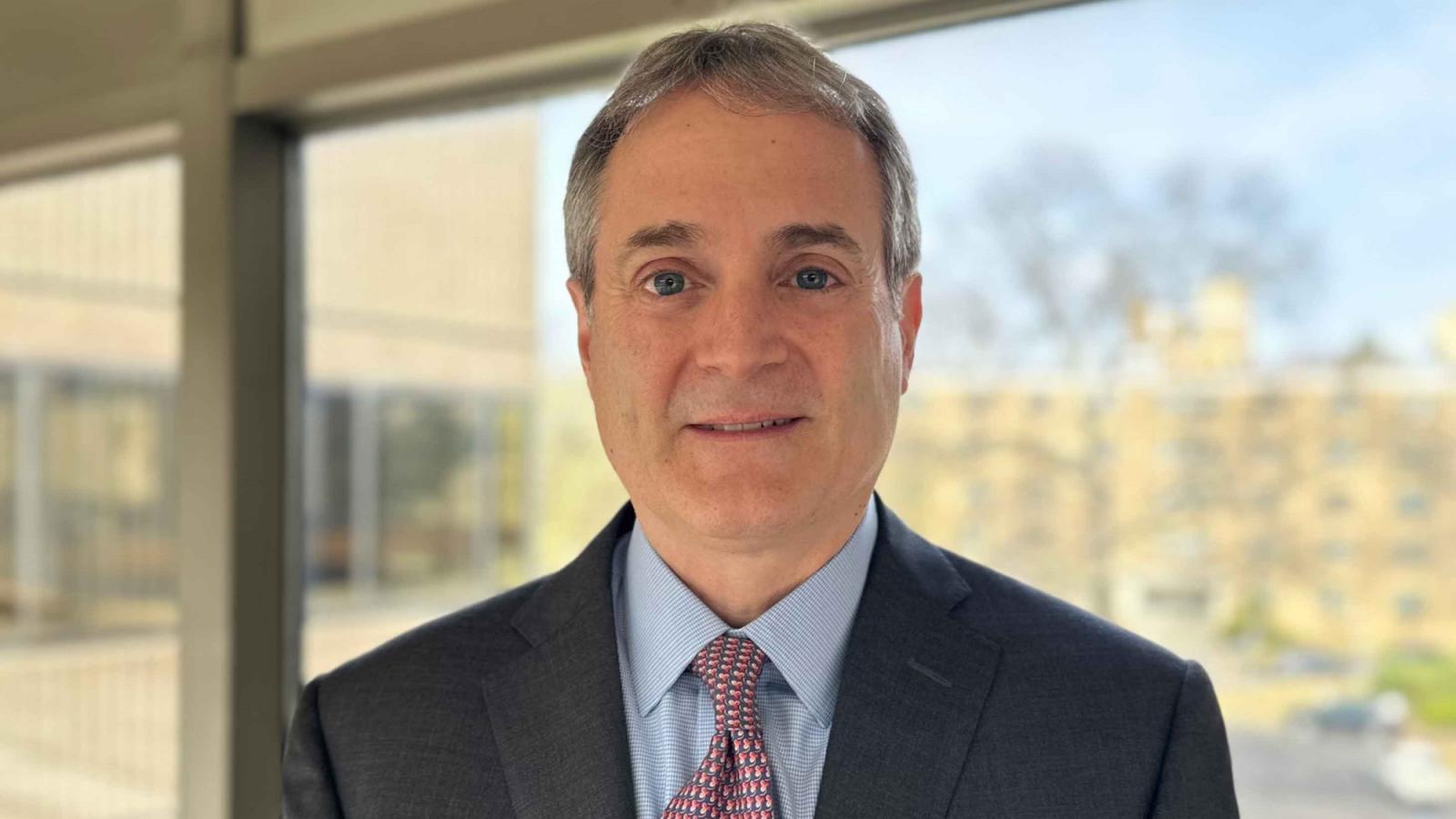
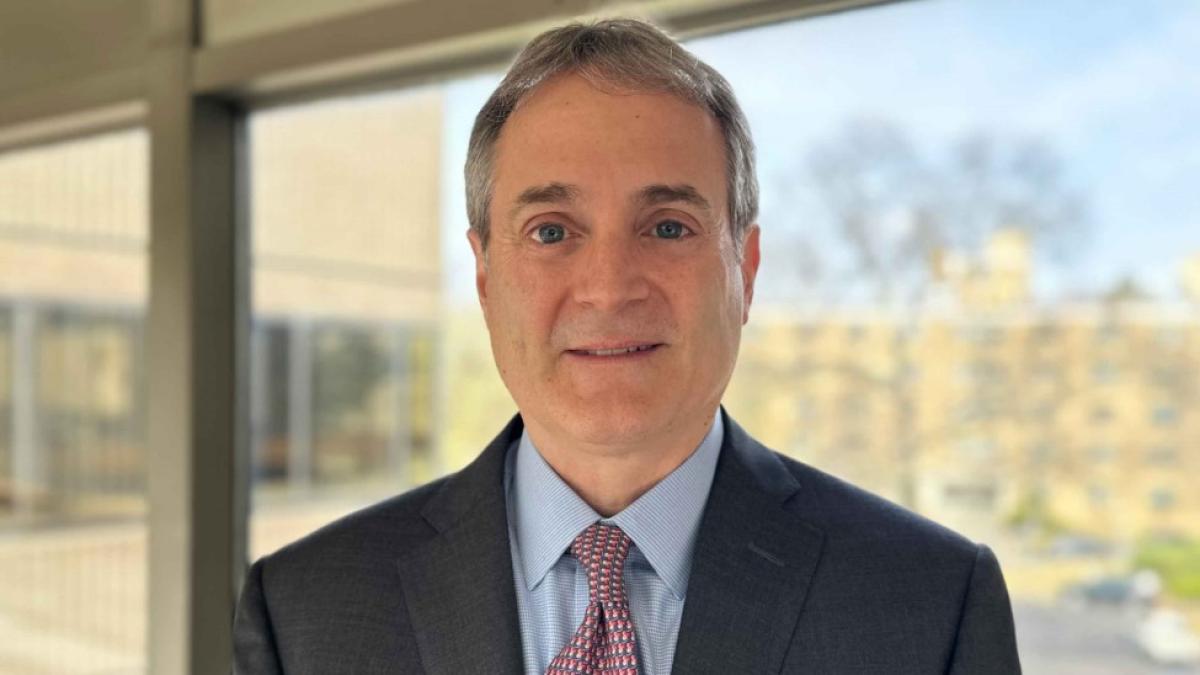
After spending the last 35 years pursuing a career in finance, Todd Jacobson ’27 decided to switch gears and pursue a law degree. “After the COVID-19 pandemic, the potentially negative longer lasting consequences became abundantly clear – from educational outcomes to healthcare access, and more. I would like to pursue a career in public policy to work on these issues.”
The part-time JD Flex scheduling program at the Elisabeth Haub School of Law at Pace University appealed to Todd as it provided the flexibility he desired. “My professional and home life have been equally busy. I have four children ranging in age from 12 to 28. Pace Haub Law’s Flex program was exactly what I was looking for to be able to balance the demands of my everyday life, while also pursuing my law degree.”
Coming from what Todd describes as a great team during his finance career, Todd feels fortunate to have a great new team at Pace Haub Law. “I have been inspired by the quality of my professors and have also built new friendships with fellow students. The atmosphere at the Law School is very much one of collegiality; we all want one another to succeed.” Todd has also found enjoyment in participating in several student groups, including the Older Wiser Law Students (OWLS), Health Law Society, and the Public Interest Law Student Organization.
Since starting Pace Haub Law, Todd has enjoyed pursuing a variety of opportunities. “I participated in the 1L Moot Court Competition, which was terrific. It was a whole new experience and challenge, but such a supportive and collaborative experience.” Todd looks forward to participating in the various healthcare classes and offerings at Haub Law. “There are endless classes and opportunities which align with my goal of working in public policy.”
As an older student, Todd wants to impart on others that it is never too late to start. “I have always been a strong believer in the pursuit of life-long learning. This experience has validated that view.” In his spare time, Todd enjoys tennis, backgammon, and skiing. He also works closely with his alma mater, SUNY-Binghamton. “I continue to mentor students and work with the Management School and am also on the Investment Board. I have also been active with the UJA-Federation of NY on their Caring Committee. I find fulfillment in giving back.”
20 Things Every New Pace Student Should Do
New here? We’ve got you. From ID cards to goat yoga (yeah, you read that right), this list has everything you need to kick off your Pace experience the right way.
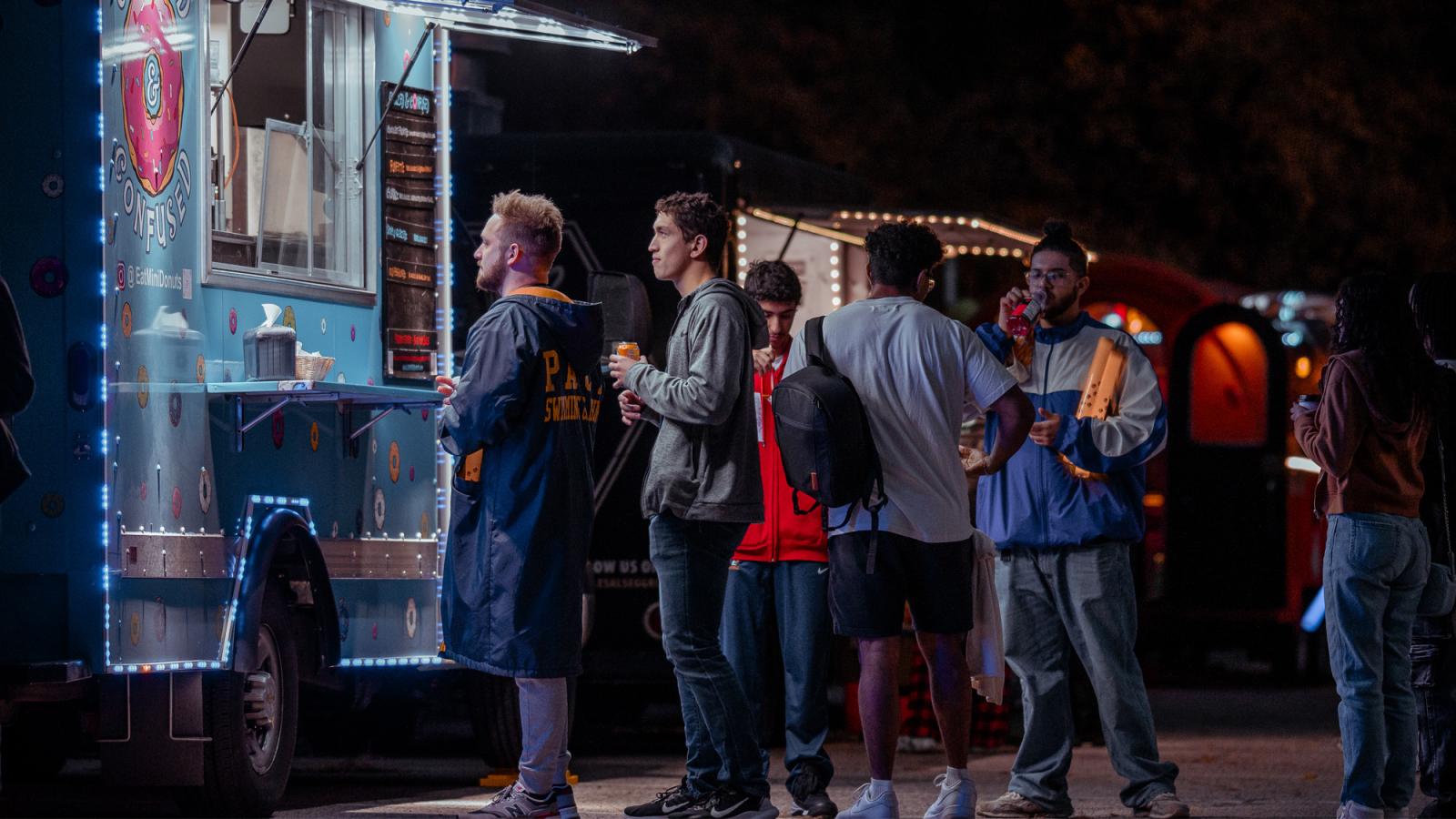

New here? We’ve got you. From ID cards to goat yoga (we've included a baby goat in this list), this list has everything you need to kick off your Pace experience the right way.
- Upload your Pace ID photo before arriving on campus. This unlocks access to everything from dining halls to campus events.
- Meet with your academic advisor. They’ll help you build a class schedule and stay on track to graduate on time.
Explore your First-Year Experience or Transfer Experience programming. Tailored support ensures your transition to Pace is smooth and meaningful.
Image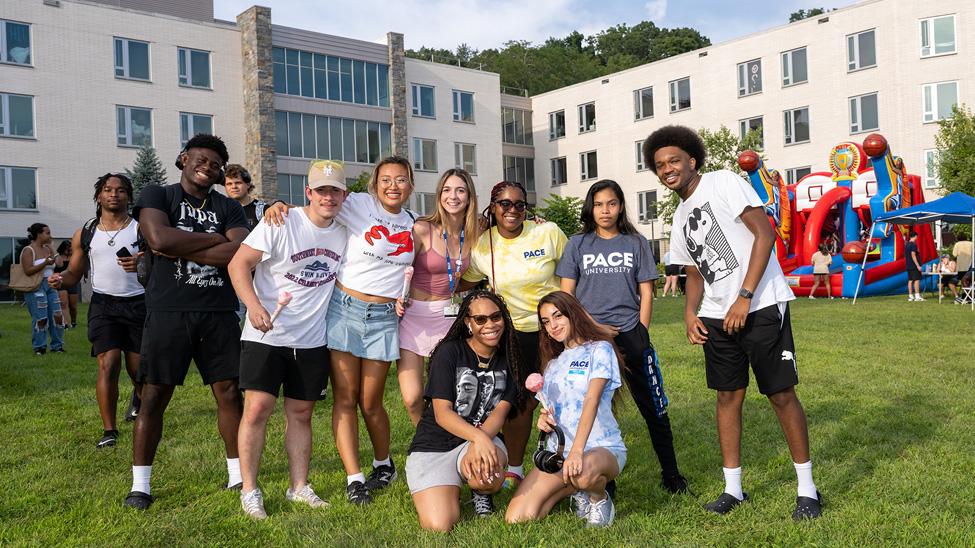
- Download the Pace Mobile app. Stay connected to campus events, resources, alerts, and more.
- Log in to SetterSync. It’s your portal to student orgs, upcoming events, and campus opportunities.
- Stop by the Center for Student Engagement. Get involved, build your network, and make your mark.
- Visit the Learning Commons. Whether you need tutoring or just want a study boost, it’s your academic support hub.
- Tour the Pace Library. Grab a quiet corner or tap into 120+ databases—it’s your research HQ.
- Attend Weeks of Welcome (WOW) events. From goat yoga to campus carnivals, these are can’t-miss memory-makers.
- Set up your meal plan and scope out your favorite spots. Try acai bowls at Pace Fit, milkshakes at Pace Perk, or pizza at Rosella’s.
- Learn your campus inside and out. Whether it's the 6th floor of 15 Beekman or the Kessel Student Center, find your go-to spaces.
- Explore the Counseling Center and Center for Wellbeing. These services are here for you—use them when you need support.
Familiarize yourself with Pace’s Safety and Security resources. Update your Pace Alerts info and download the PaceSafe app.
Image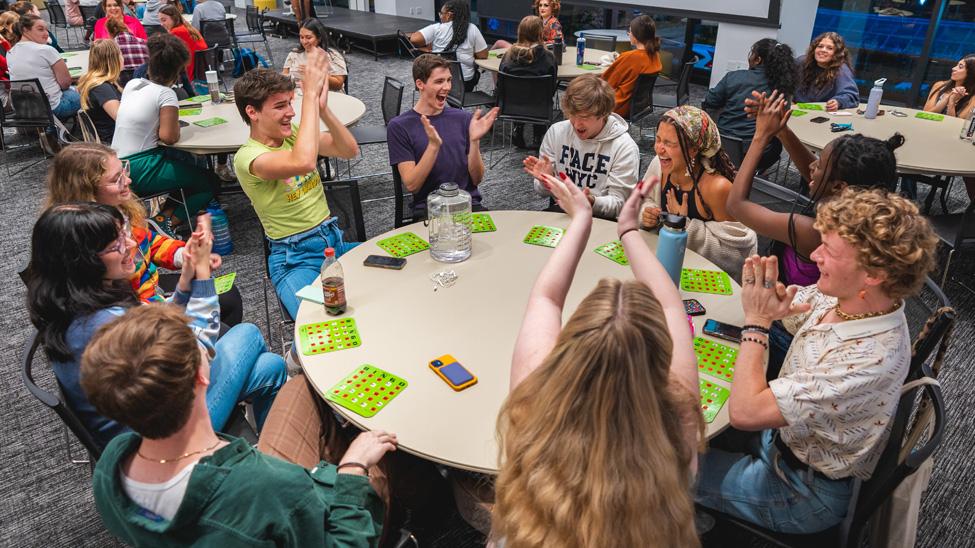
- Explore New York City or Westchester like a local. From Broadway trips to nature trails, Pace gives you access to it all.
- Visit the Auxiliary Services office. Set up essentials like your mail, textbooks, and meal plan info.
- Follow Pace University on Instagram. It's the easiest way to stay in the loop.
- Attend a campus tradition. Homecoming, SpringFest, Late Night Breakfast—these are Pace must-dos.
- Visit Career Services. Yes, even as a new student. Start building your resume early.
- Check out the food resources if you need support. Pace Provisions and the Fare Trade program are here to help.
- Say yes to something new! Join a club. Go to an open mic. Try goat yoga. You never know what you’ll love.

More from Pace
At Pace, you’ve got an entire team in your corner. These are the top 10 people (and offices!) every new student—and their families—should know, right from the start.
Starting college is a big move—and at Pace, it’s your moment to take the lead. From finding your rhythm to navigating new responsibilities, the choices you make now help shape your experience. We’ve curated five smart, straightforward tips to help you start strong and thrive as a first-year student.
From our emphasis on career readiness and real-life learning to our strategic locations that leverage the unparalleled opportunities of the New York metro area, the advantages of a Pace education are endless.
College Campuses Nationwide Embrace Radical Health Mental Health Program
Nearly 1,000 Pace students have participated in the Radical Health program since its launch, and PIX11 highlights the impact of this mental health and resilience initiative, developed in partnership with the Radical Hope Foundation. And Anchor Shirley Chan does an exemplary job showcasing the Pleasantville campus.

The Top 10 People (and Offices!) You Need to Know at Pace
At Pace, you’ve got an entire team in your corner. These are the top 10 people (and offices!) every new student—and their families—should know, right from the start.
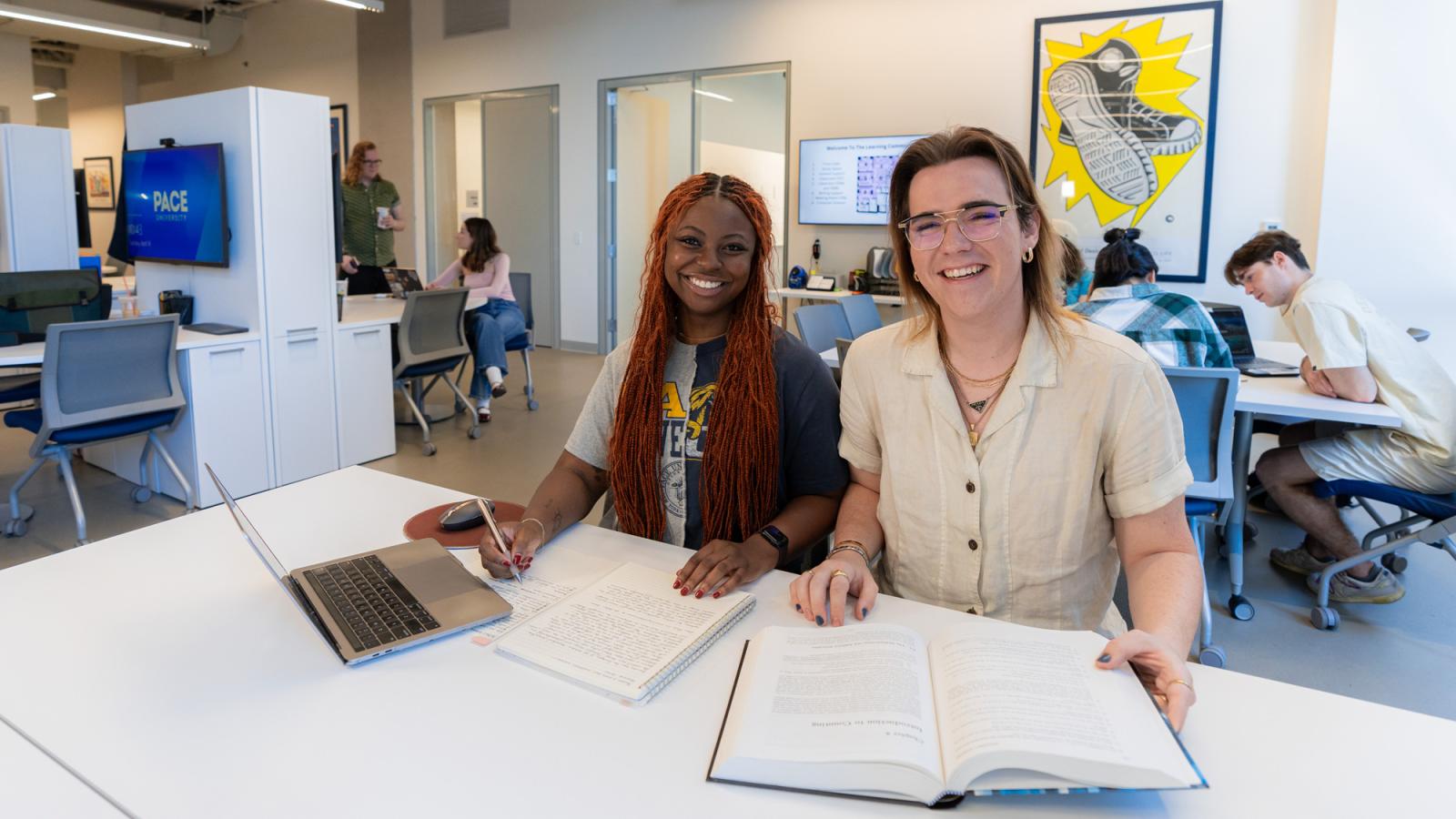
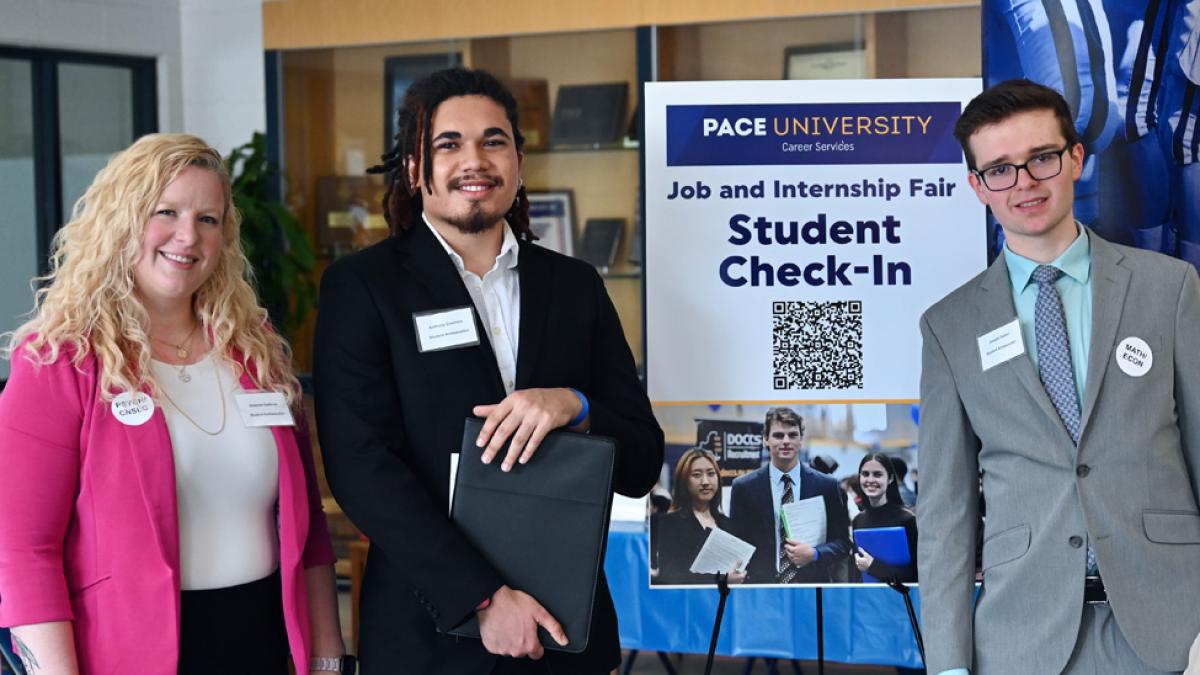
Starting college is exciting—but let’s be real, it can be a lot. Knowing who’s who on campus can make all the difference when you need answers, advice, or support. At Pace, you’ve got an entire team in your corner. These are the top 10 people (and offices!) every new student—and their families—should know, right from the start.
#1 Your Academic Advisor
Your advisor is your personal guide to navigating majors, choosing classes, and staying on track to graduate. They’re one of the most important people you’ll meet at Pace—reach out early and check in often.
#2 Your Professors
They’re not just here to teach—they’re mentors, connectors, and champions for your academic success. Go to office hours, introduce yourself after class, and don’t be afraid to ask questions.
#3 The Dean for Students
The Dean for Students oversees student life and support services and advocates for your overall experience. If you’re not sure where to go for help, this is a great place to start.
#4 Your Resident Assistant (RA)
Living on campus? Your RA is a fellow student trained to help you with everything from roommate questions to connecting with campus life. They’re also your go-to for building community in your residence hall.
#5 The Center for Student Engagement Team
Whether you want to join a club, plan an event, or get involved in leadership programs, this is the team that makes it happen. They’ll help you find your people—and your purpose.
#6 Your Career Counselor
It’s never too early to visit Career Services. They’ll help you build a resume, prepare for internships, explore job options, and plan for what comes after graduation.
#7 Your Financial Aid Rep
Questions about your aid package? Need help navigating the FAFSA or scholarship options? The Financial Aid team can walk you through your options and keep your finances on track.
#8 Staff in the Learning Commons
Whether you need help with writing, math, or any other subject, the Learning Commons offers free tutoring and study support. They’re a major key to academic success.
#9 University Health Care and the Counseling Center
Your physical and mental health matter. These licensed professionals provide everything from wellness visits to mental health counseling—confidentially and at no extra cost.
#10 Campus Safety
On every campus, Safety and Security is available 24/7, 365. They’re your resource for emergency alerts, safety escorts, and peace of mind for students and families alike.
More from Pace
Starting college is a big move—and at Pace, it’s your moment to take the lead. From finding your rhythm to navigating new responsibilities, the choices you make now help shape your experience. We’ve curated five smart, straightforward tips to help you start strong and thrive as a first-year student.
Choosing the right college is a big decision—for both students and their families. At Pace University, we understand that you’re not just sending your student off to school—you’re investing in their future. Here are five reasons you can feel confident about what’s ahead for your student at Pace.
Moving away from home for the first time can be both exciting and challenging. Here are key topics to discuss to help your student succeed academically, manage their finances, stay healthy and safe, and maintain open communication.
President Trump Marks 100th Day Of Second Term
Political Science Professor Laura Tamman appears on CBS New York to analyze President Trump’s first 100 days in office.
5 Smart Tips to Own Your Pace Experience
Starting college is a big move—and at Pace, it’s your moment to take the lead. From finding your rhythm to navigating new responsibilities, the choices you make now help shape your experience. We’ve curated five smart, straightforward tips to help you start strong and thrive as a first-year student.
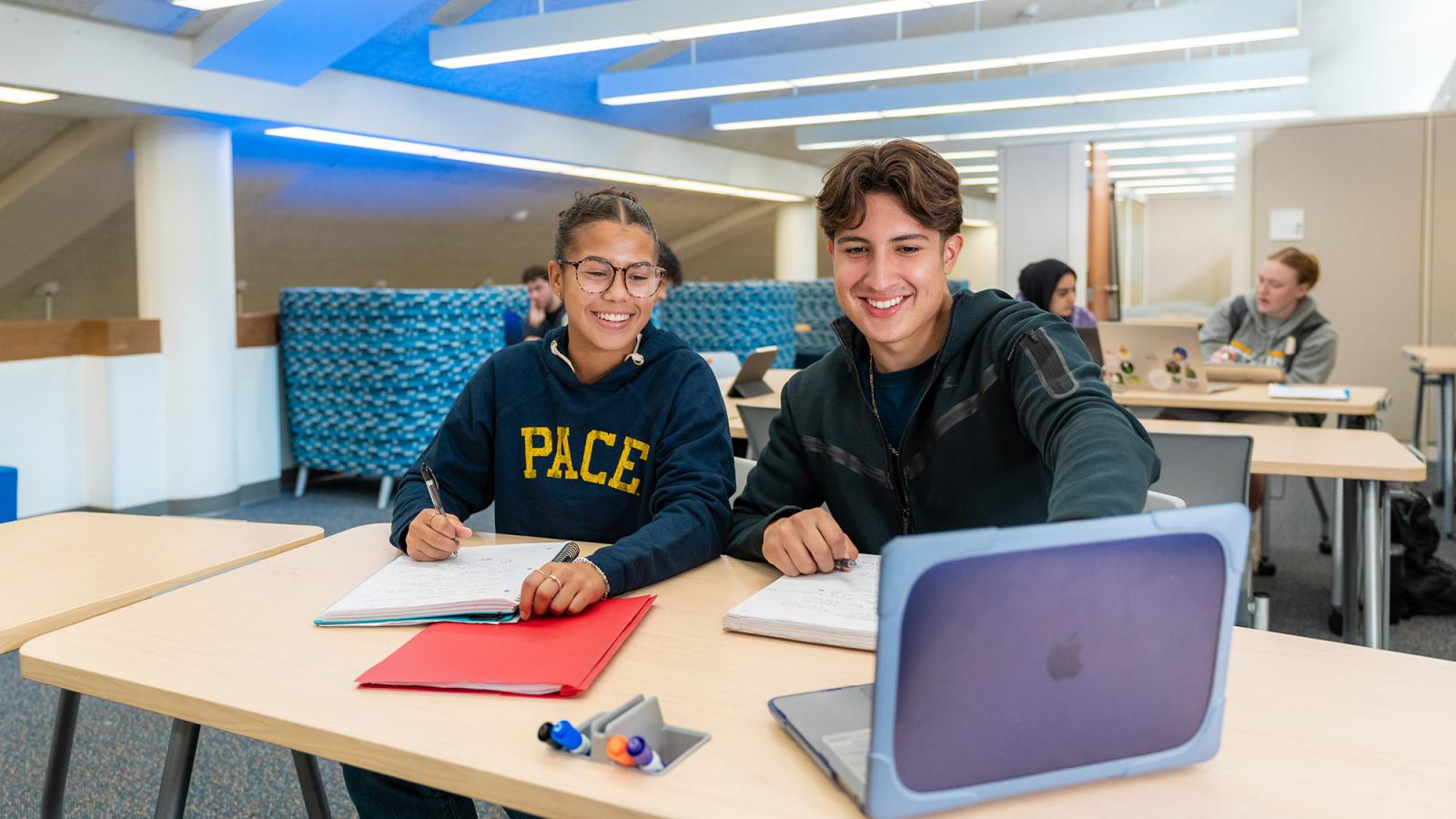
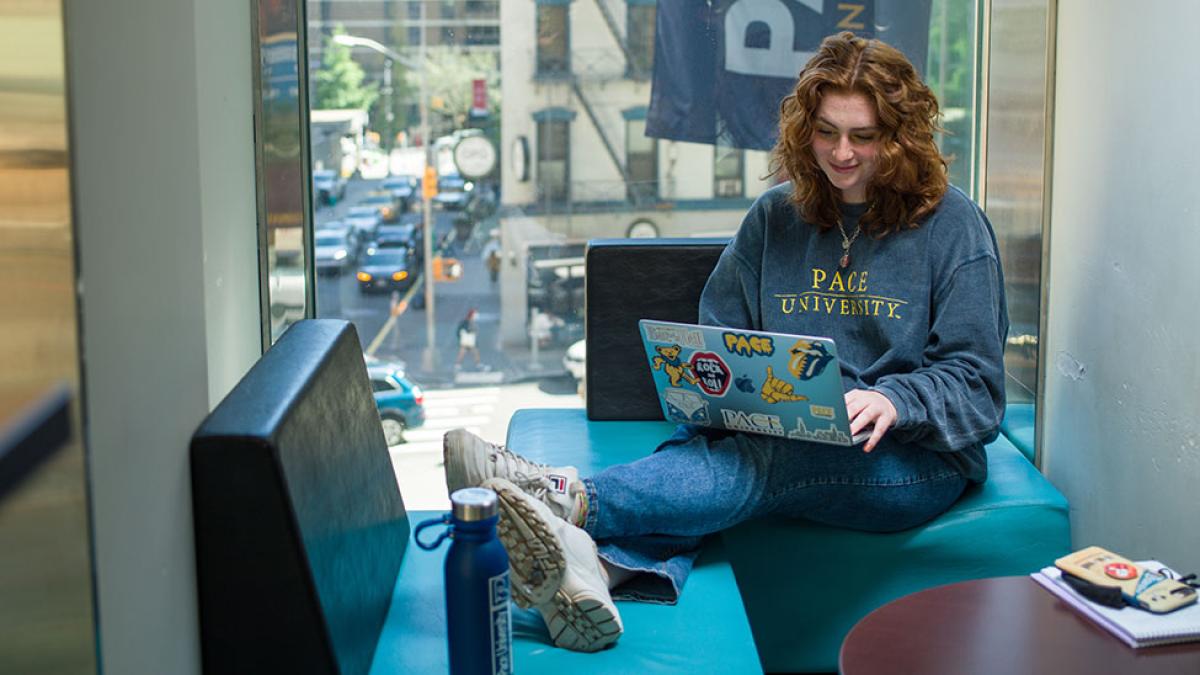
College is your next big step—and at Pace, you're in charge. That means showing up, speaking up, and taking responsibility for your future. You don’t have to figure everything out on your own, but success starts when you take the lead.
Here’s how to get started:
- Check your Pace email—every day.
Opportunities, deadlines, alerts, and class updates live here. Want to stay in the loop? Make checking your email part of your daily routine. - Build a relationship with your academic advisor.
Your advisor is your go-to for course planning, exploring majors, and keeping your graduation goals on track. The earlier you connect, the more support you’ll have. - Show up—and say yes.
Go to that event. Try that club. Introduce yourself. Getting involved early helps you meet people, build confidence, and create a sense of community. - Ask for help when you need it.
Everyone needs support. Whether it's tutoring, counseling, or food assistance, Pace has resources to help you stay strong and succeed. Use them—they’re here for you. - Stay connected and take initiative.
You’re in charge of your time, your choices, and your experience. That means reading instructions, meeting deadlines, and asking questions when things aren’t clear. Being proactive is one of the best skills you can build here.
More from Pace
From our emphasis on career readiness and real-life learning to our strategic locations that leverage the unparalleled opportunities of the New York metro area, the advantages of a Pace education are endless.
Getting ready for college is a big deal—and joining the Pace Community makes it even more exciting. Your student isn’t just heading off to college; they’re stepping into a world of opportunity. Here are five ways to help them navigate the transition and start strong at Pace.
Moving away from home for the first time can be both exciting and challenging. Here are key topics to discuss to help your student succeed academically, manage their finances, stay healthy and safe, and maintain open communication.

